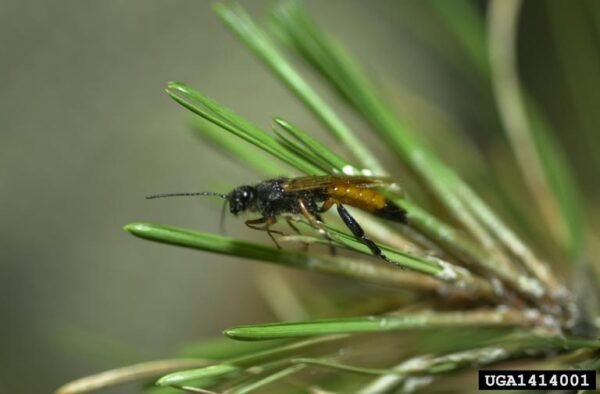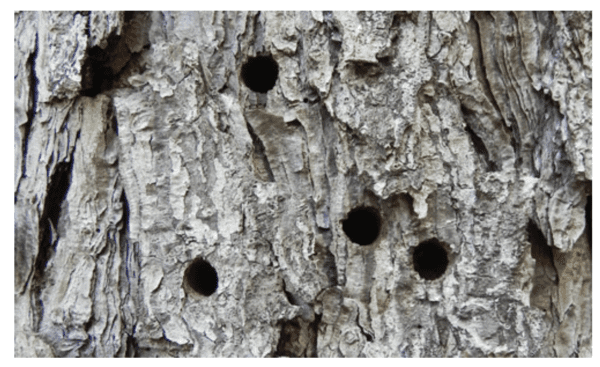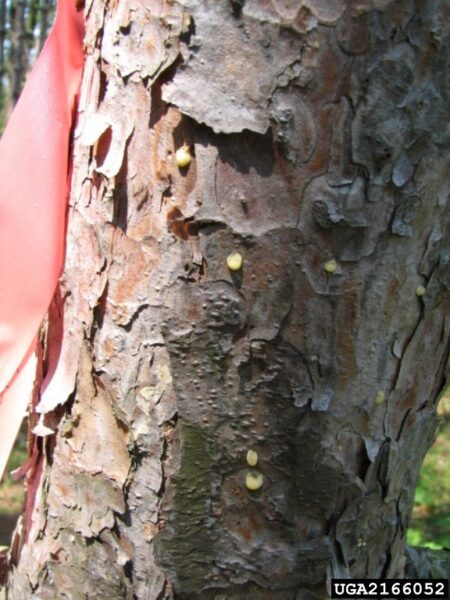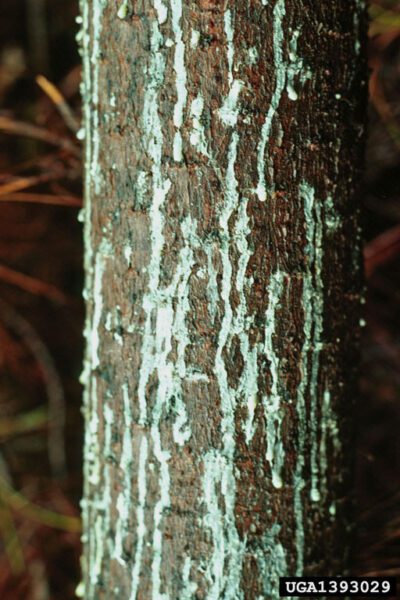Invasive Pests
Invasive pests (plants, insects, diseases, and others) cause enormous economic damage, as well as environmental damage. These displace or destroy beneficial and native plants and animals, reduce biodiversity. The annual economic cost is estimated at $1 billion in VA alone, more than $120 billion in the US.
If you think you see the following pest, which is not yet known to occur in Bedford County, please contact the Bedford Master Gardeners at bedfordmg@vt.edu or 540-586-7675. If you are outside of Bedford County, please contact your local Virginia Cooperative Extension Office.
Invasive Pest #4
Sirex Wood Wasp (Sirex noctilio)

A 1 to 1.5 inch long wasp with a metallic blue-black body. Males have orange segments on their abdomens, this imported insect is native to Asia and Europe. It was first identified in NY in 2004, as an accidental import in wood products. In 2005, pest surveys in New York discovered sirex away from ports in mixed hardwood forests of over 25 counties. It has since spread to northern Pennsylvania. (ref 1). As of June 2023, the wasp has been found in multiple northern states (MI, OH, PA, MD, NY, VT, CT).
Unlike native wood wasps which tend to attack weak and dying pines, this one aggressively attacks healthy trees. Tree mortality is brought about by the female wasp. As she lays her eggs in the host tree, she injects a symbiotic fungus along with a toxic mucus. Together, the mucus and the fungus kill the tree. Wasp larvae feed on the fungus. Southern hemisphere pine plantations infested by sirex have seen tree mortality as high as 80 percent. (ref 1, 2)

Although many species of Pine (Pinus) are hosts, Monterey and loblolly appear especially vulnerable. The concern about this wasp is that loblolly and related species of “southern pines” are the bread basket of forestry in southern US. Like many other wood boring insects, S. noctilio tends to favor stressed trees, but it also attacks and kills apparently healthy trees as its populations grow. It has been known to kill up to 80% of the trees in stands of North American pine species grown in plantations in south America. The main reason it is such a threat is because as the female horntail insects its eggs, it also inoculated the fungus (Amylostereum aveolatum). The fungus grows in the wood of the tree and serves as food for the wasp larva but also can kill trees quickly. (ref 3)

Resin droplets and oviposition scars are diagnostic signs of infestation by this pest. Larvae tunnel in the wood creating galleries full of very fine frass, which significantly damages the wood. Round exit holes, approximately 3 to 8 mm in diameter, appear when the adult insects emerge (ref 6)

References (confirmed 6/9/2023)
Submitted by Betsy B., Bedford Extension Master Gardener and Help Desk Coordinator.